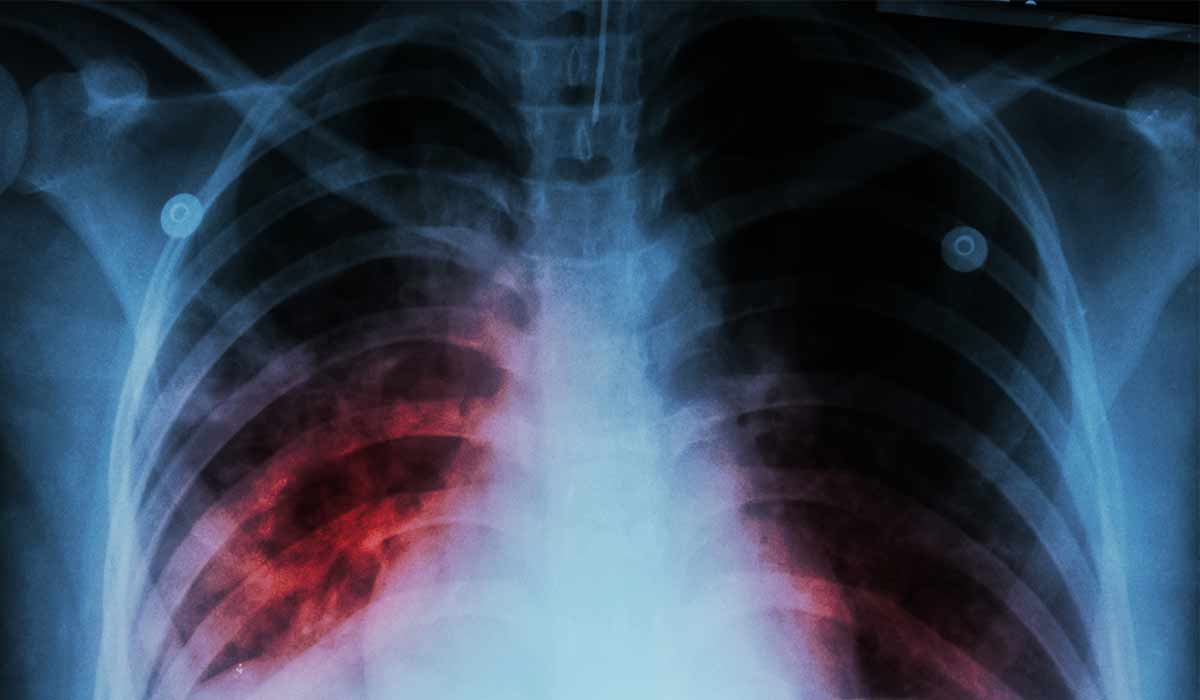Dysentery is an acute intestinal disease that leads to the development of severe illnesses. The development of typical symptoms is caused by intense inflammation in the intestines, which seriously damages the morphological structures of these organs and disturbs their functioning.
There are several types of dysentery. The classification depends on the etiological factor responsible for the development of the disease.
Nowadays, dysentery occurs mainly in the so-called developing countries. For this reason, it is significant to pay attention to disturbing symptoms during tourist trips to these parts of the world.
Young children are most at risk of developing dysentery, especially in large crowds, such as in nurseries or kindergartens. An increased risk of developing this disease also occurs among older people with comorbidities who stay in different kinds of care facilities. Additionally, people suffering from various types of immune disorders, for example, due to HIV infection or as a result of the use of immunosuppressive drugs, are more at risk of developing dysentery.

Amoebiasis (amoebic dysentery![]() ) is a parasitic disease of the gastrointestinal tract, occurring mainly in tropical and subtropical climates. Entamoeba histolytica is a pathogenic amoeba that causes dysentery, while other species of amoeba are non-pathogenic and can live in the human digestive tract as commensal organisms.
) is a parasitic disease of the gastrointestinal tract, occurring mainly in tropical and subtropical climates. Entamoeba histolytica is a pathogenic amoeba that causes dysentery, while other species of amoeba are non-pathogenic and can live in the human digestive tract as commensal organisms.
The main reservoir and host of dysentery microorganisms are humans. Infection with the amoeba occurs mainly through the dietary route, through the consumption of vegetables and fruits, or water-containing parasite cysts. The infection vector may also be an insect, e.g., a horsefly.
Amoebiasis infections are most common in areas with poor sanitary conditions, lack of running water, and where basic hygiene rules are not followed.
After ingesting amoeba cysts, they transform into the so-called trophozoites. These invasive forms live in the large intestine, feeding on fungi and bacteria. Sometimes, tissue invasion may occur when trophozoites enter the liver or other organs in the blood. In addition, trophozoites can transform into cysts again and are then excreted with the feces.
Amoebas can live in the body for many years without causing any disease symptoms – then the person unknowingly becomes a source of infection. Most often, the symptoms are mild and include abdominal pain and flatulence, diarrhea, or appetite disorders. Sometimes, a severe form of the disease develops.
Symptoms of amoebic dysentery include:
In the course of acute dysentery, intestinal perforation may occur. Failure to treat acute amoebic dysentery leads to the development of a chronic form, which manifests itself in alternating diarrhea and constipation, low-grade fever, anemia, and weight loss.
In treating amoebiasis, pharmacological treatment![]() , i.e., antibiotic therapy, is used. Surgical treatment may be necessary in case of abscess rupture and drainage into the peritoneal cavity, biliary tract, and other locations. The specialists monitor the effectiveness of the therapy using imaging tests (e.g., the abdominal cavity ultrasound or CT scan) and serological tests.
, i.e., antibiotic therapy, is used. Surgical treatment may be necessary in case of abscess rupture and drainage into the peritoneal cavity, biliary tract, and other locations. The specialists monitor the effectiveness of the therapy using imaging tests (e.g., the abdominal cavity ultrasound or CT scan) and serological tests.
Dysentery![]() is an infectious intestinal disease caused by Gram-negative bacilli of the Shigella genus
is an infectious intestinal disease caused by Gram-negative bacilli of the Shigella genus![]() – S. sonnei, S. dysenteriae, S. flexneri, and S. boydii. This disease occurs worldwide, but most cases are recorded in countries with poor sanitary conditions. The disease occurs seasonally and is more severe in the summer and spring.
– S. sonnei, S. dysenteriae, S. flexneri, and S. boydii. This disease occurs worldwide, but most cases are recorded in countries with poor sanitary conditions. The disease occurs seasonally and is more severe in the summer and spring.
Infection occurs by transferring the bacteria to the oral cavity by touching the mouth, eating food, or drinking contaminated water. The source of infection may be sick people, recovered patients, or carriers who excrete the bacteria in their feces. Bacteria enter the environment with the feces of someone suffering from dysentery or being an asymptomatic carrier of Shigella bacteria. Additionally, these pathogens can be transported by flies and other insects and through sexual intercourse.
After entering the human body, the bacterium adheres to the walls of the large intestine and penetrates the epithelial cells of this section of the digestive tract. Bacteria continue to multiply within these cells and the submucosal layer of the intestine. The enterotoxins they produce and local inflammation caused by the body's immune response are responsible for the development of symptoms of dysentery.
The exact course of the disease and the clinical picture of dysentery depend on many factors, including the serotype of Shigella bacteria causing the disease, additional health burdens on the patient, their nutritional status, and immunocompetence. The disease is most severe in people with comorbidities or poor general health before infection.
The incubation period for dysentery is usually 1 to 4 days. It means that the first symptoms![]() of illness appear most often within 4 days of pathogens entering the body.
of illness appear most often within 4 days of pathogens entering the body.
In the first phase of the disease, individuals may experience symptoms such as:
In some cases, dysentery may go away on its own after the initial stages of the condition. In other patients, the disease may progress further, and symptoms of acute colitis may appear, such as frequent, bloody diarrhea. After about a week, the symptoms usually disappear.

Dysentery may result in dehydration![]() and other health-threatening complications
and other health-threatening complications![]() . Dehydration, generalized inflammation, and bacterial toxins can lead to blood vessel damage and acute kidney failure.
. Dehydration, generalized inflammation, and bacterial toxins can lead to blood vessel damage and acute kidney failure.
A complication of dysentery may also be sepsis (septicemia). In the case of complicated dysentery, neurological symptoms may appear (headache, drowsiness, convulsions), as well as inflammation of the joints, urethra, conjunctiva, heart muscle, and liver damage.
Making a diagnosis is based mainly on assessing the patient's clinical condition and detecting characteristic symptoms. Additionally, it is helpful to perform stool tests![]() and, possibly, rectoscopy
and, possibly, rectoscopy![]() – an examination of the rectum and the final section of the large intestine, which allows for visualizing changes in the mucous membrane and collecting material for testing.
– an examination of the rectum and the final section of the large intestine, which allows for visualizing changes in the mucous membrane and collecting material for testing.
Thanks to these tests, it is possible to precisely determine the species of microorganism that causes the disease in a given patient. Additionally, an antibiogram is performed during bacteriological tests. This test involves assessing the sensitivity of a given strain of bacteria to particular antibiotics, thanks to which the attending doctor can select the most appropriate treatment regimen. If a specialist prescribes antibiotic therapy, the recommendations should be strictly followed in terms of the dosage of the preparation and the total duration of its use.
In certain cases, the doctor may carry out additional tests, such as blood count or measurement of CRP, prolactin, or individual electrolyte concentrations in the blood. It is particularly significant in the case of patients with additional health burdens who are more vulnerable to the development of possible complications.
If the patient is diagnosed with dysentery, the doctor will prescribe appropriate antibiotics![]() and supportive treatment. Dysentery is a self-limiting disease, so not every patient requires antibiotics. Antibiotic therapy is indicated in elderly and burdened people with additional chronic diseases, malnourished people, patients with immunodeficiencies (e.g., HIV infection or cancer), people in professional contact with food, health care workers, school teachers and educators from nursing homes, children attending kindergarten or school. The clinical condition of some of these people may require hospitalization.
and supportive treatment. Dysentery is a self-limiting disease, so not every patient requires antibiotics. Antibiotic therapy is indicated in elderly and burdened people with additional chronic diseases, malnourished people, patients with immunodeficiencies (e.g., HIV infection or cancer), people in professional contact with food, health care workers, school teachers and educators from nursing homes, children attending kindergarten or school. The clinical condition of some of these people may require hospitalization.
In developed countries where dysentery occurs sporadically, most experts recommend antibiotic treatment for any person. This approach shortens the duration of the disease and limits the excretion of bacteria in the feces, which reduces the risk of transmitting the disease to other people.
In the dysentery treatment, a liquid, easily digestible diet![]() and supportive measures in the form of antipyretic and antidiarrheal drugs and oral or intravenous hydration are necessary. In dysentery with hemorrhagic diarrhea, antipyretics should be used. Antidiarrheal drugs include preparations with an adsorption effect, which additionally provide mechanical protection of the intestinal mucosa.
and supportive measures in the form of antipyretic and antidiarrheal drugs and oral or intravenous hydration are necessary. In dysentery with hemorrhagic diarrhea, antipyretics should be used. Antidiarrheal drugs include preparations with an adsorption effect, which additionally provide mechanical protection of the intestinal mucosa.

In diarrhea caused by an infectious agent, including dysentery, antidiarrheal drugs that inhibit peristalsis should not be used. Inhibition of peristalsis causes the accumulation of bacteria and toxins in the digestive tract. The consequence of the interaction of these factors may be life-threatening paralytic obstruction of the gastrointestinal tract.
Adequate hydration is an essential issue in gastrointestinal disorders. Oral hydration with appropriate hydration fluids (oral rehydration solutions) available in pharmacies containing relevant concentrations of glucose and mineral salts is always preferred. Intravenous hydration is recommended if oral fluid intake is not possible.
Dysentery is a curable disease. Symptoms of the disease may disappear spontaneously within 7-10 days. Normal digestive functions of the gastrointestinal tract should return within a few weeks, during which time an easily digestible diet is recommended. Bacterial carriage in the gastrointestinal tract lasts approximately 3-4 weeks after an infection. The prognosis for dysentery is good provided it is diagnosed early, which helps reduce the incidence of complications of the disease.
Once you have recovered from uncomplicated dysentery, there is usually no need to remain under medical supervision or have follow-up tests. If a person working in the food and catering industry, medical care, teachers, and other people employed in nurseries, kindergartens, and schools, school students and students of universities educating themselves in the industries mentioned above suffer from dysentery before being allowed to work or study, such a person should obtain two negative stool cultures for Shigella bacteria. It is aimed at preventing the further spread of the infection.
Carrying the bacteria of the Shigella genus after dysentery may persist for up to a month, so to prevent the spread of infection, sick people or carriers must strictly observe hand hygiene. It should not prepare meals for other people or use public swimming pools. In hospitals, nurseries, kindergartens, or nursing homes, staff who perform hygiene procedures for residents should not participate in preparing and serving meals.
Due to the severe and devastating course of the Shigella infection, measures should be taken to avoid this infection. Dysentery can be prevented by, among others, disinfecting excretions of sick people and objects contaminated with them. However, the most important preventive measure is proper personal hygiene.
The World Health Organization (WHO) has developed hygiene rules to protect against gastrointestinal infections caused by Shigella bacilli and other pathogenic bacteria and other pathogens. These tips are called “Five Keys to Safer Food”![]() .
.
Keep clean:
Separate raw food from cooked food:
Cook thoroughly:
Keep food at the right temperature:
Use safe water and raw materials:
Table of Contents

Diarrhea is usually a symptom of a gastrointestinal infection. It is characterized by excessive excretion of stool with a loose… read more »

Salmonella bacteria infect both humans and animals. They can be found mainly in poultry but also in the meat of… read more »

A UTI is a urinary tract infection. They are most often caused by bacteria. Infection may be limited to bladder… read more »

Staph infection is a common disease. How can you get infected with this bacteria? How to avoid it? Learn all… read more »

A bladder infection, also known as cystitis, is a type of urinary tract infection that occurs when bacteria enter and… read more »

MRSA infection is a medical condition in which antibiotic-resistant bacteria attack the body. The infection can be asymptomatic or very… read more »

Tuberculosis is an infectious disease caused by mycobacteria. There are many types of tuberculosis with varying symptoms. Learn it all… read more »

Bacterial infections are diseases caused by the accumulation of bacteria in the body. How to distinguish them from viral infections?… read more »

Lactic acid is an organic chemical compound used in various industries. Lactic acid bacilli are essential for health. Learn more… read more »